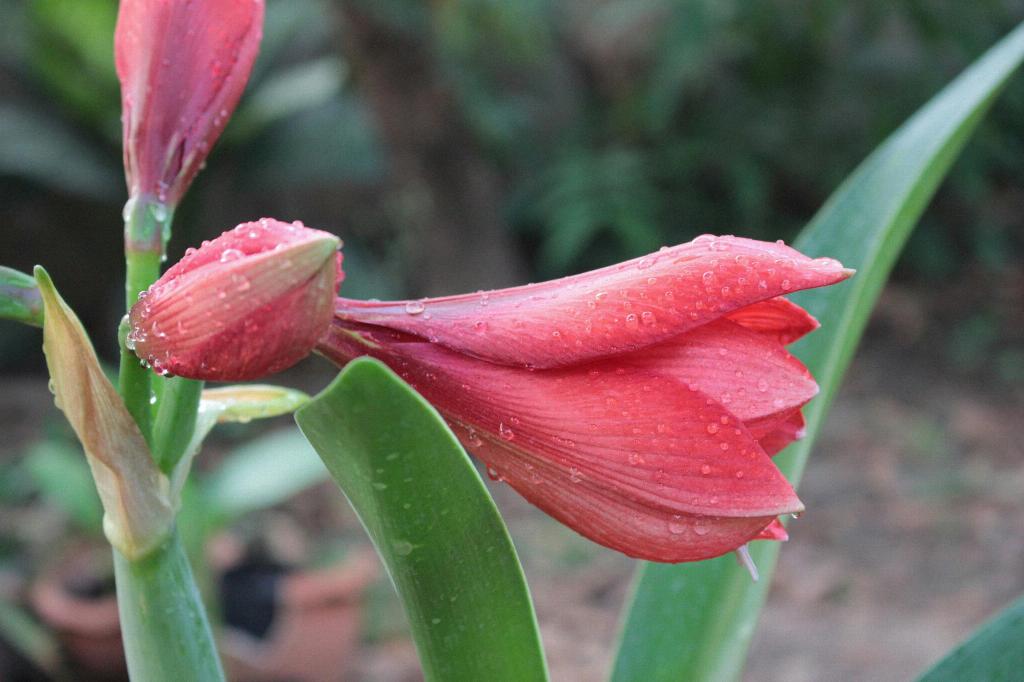When it comes to caring for your amaryllis plant, there are several key steps to ensure its health and vitality. You must pay close attention to watering, sunlight exposure, fertilization, and proper maintenance to cultivate a thriving and beautiful plant.
Watering
One of the most critical aspects of caring for an amaryllis plant is proper watering. It is essential to strike a balance between not overwatering, which can lead to bulb and root rot, and not underwatering, which can cause the plant to dry out. To avoid water-related issues, ensure the plant is not sitting in standing water and only water it when the soil is dry to the touch.
Sunlight Exposure
Amaryllis plants require a significant amount of sunlight to thrive. Place your plant in a location that receives bright, indirect sunlight for at least six hours a day. Adequate sunlight exposure is essential for the plant to produce vibrant blooms and maintain healthy foliage.
Fertilization
Proper fertilization is crucial for the overall health and blooming potential of your amaryllis plant. When new growth appears, fertilize the plant each time you water, using a houseplant fertilizer with a high phosphorus content. Fertilizing at half the recommended strength will provide the nutrients necessary for robust growth and blooming.
Maintenance
In addition to watering, sunlight exposure, and fertilization, regular maintenance is essential for caring for your amaryllis plant. Remove any dead or yellowing leaves to encourage new growth and prevent the spread of disease. Inspect the plant regularly for signs of pests and treat any infestations promptly to protect the plant’s health.
Repotting
As your amaryllis plant grows, you may need to repot it to provide ample room for the developing bulbs. Repot the plant in fresh potting soil every two to three years or when the current pot becomes overcrowded. Choose a pot that is only slightly larger than the bulb to prevent overwatering.
Temperature and Humidity
Amaryllis plants prefer temperatures between 60-75°F (15-24°C) and moderate humidity levels. Avoid placing the plant near drafts, heaters, or air conditioning vents, as extreme temperature fluctuations can stress the plant. Maintain consistent humidity levels by misting the plant occasionally or using a humidity tray.
Pruning
Pruning your amaryllis plant is an essential part of its care routine. Remove any spent flowers by cutting them at the base of the stem to encourage new blooms. Trim any brown or withered foliage to maintain the plant’s appearance and prevent disease from spreading.
Rest Period
After your amaryllis has finished blooming, allow it to enter a rest period to conserve energy for the next growing season. As the foliage begins to yellow and wither, gradually reduce watering and stop fertilizing the plant. Store the dormant bulb in a cool, dark place for 8-10 weeks before reintroducing it to light and water to stimulate new growth.
Pot Selection
Choosing the right pot for your amaryllis plant is crucial for its overall health and growth. Select a well-draining pot with drainage holes to prevent water logging and root rot. Ceramic or terracotta pots are ideal as they provide stability and allow for airflow to the roots.
Propagation
If you wish to propagate your amaryllis plant, you can do so by dividing the bulbs or collecting seeds. Divide overcrowded bulbs in the spring before new growth appears, ensuring each division has healthy roots and foliage. Seeds can be collected from the spent flower heads and sown in a well-draining potting mix.

Conclusion
Caring for an amaryllis plant requires diligence, attention to detail, and a nurturing touch. By following the steps outlined above, you can cultivate a thriving and vibrant plant that will reward you with stunning blooms year after year. Remember to stay observant, adjust your care routine as needed, and enjoy the beauty of your flourishing amaryllis plant.
